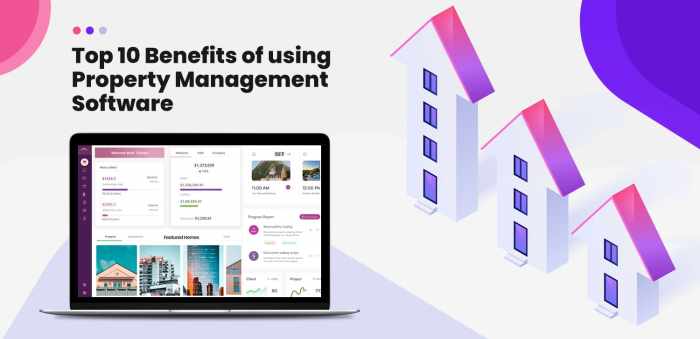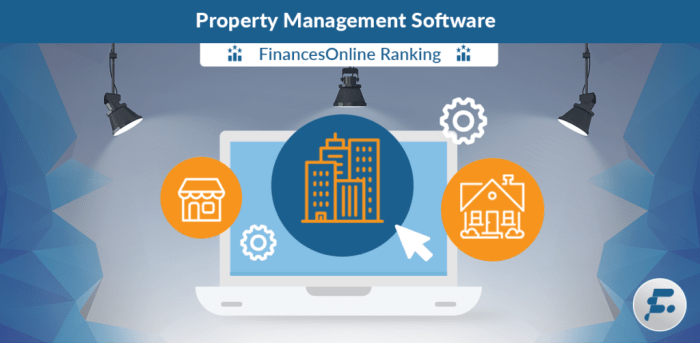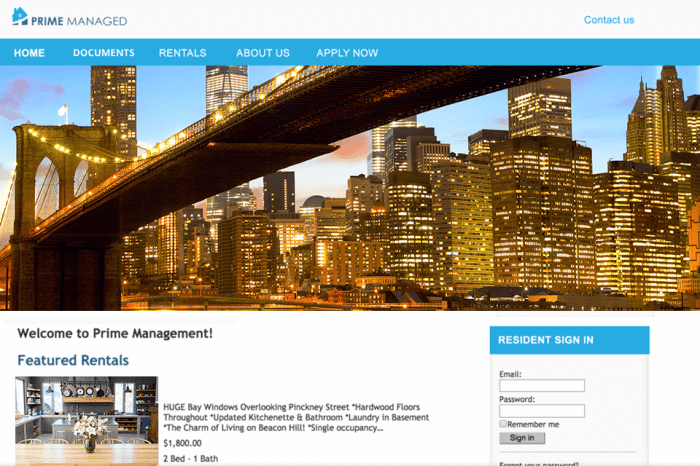Unlocking Efficiency: A Guide to Property Management Software
Property management software revolutionizes the way properties are managed, offering a seamless solution to streamline processes and enhance efficiency. In this comprehensive guide, we will delve into the key aspects of property management software, from its benefits to implementation strategies, providing valuable insights for real estate professionals looking to optimize their operations.
Importance of Property Management Software

Property management software plays a crucial role in efficiently managing properties, whether residential or commercial. Let's explore the benefits and examples of how this software streamlines processes and enhances overall efficiency.
Streamlining Processes
- Automated Rent Collection: Property management software allows landlords to collect rent online, eliminating the need for manual payments and tracking.
- Document Management: Important documents such as leases, agreements, and maintenance records can be stored securely in one place, reducing paperwork and improving organization.
- Communication Tools: Software provides communication channels for tenants to submit maintenance requests, ask questions, and receive updates, enhancing tenant satisfaction.
Improving Efficiency
- Financial Management: Tracking income and expenses, generating financial reports, and monitoring budgets become more efficient with property management software.
- Vacancy Management: Software helps in advertising vacancies, screening potential tenants, and filling vacancies quickly, minimizing income loss.
- Maintenance Tracking: Managing maintenance requests, scheduling repairs, and tracking maintenance costs are simplified, ensuring timely property upkeep.
Key Features of Property Management Software
Property management software offers a variety of features to streamline and optimize tasks related to managing properties. Let's delve into some key features commonly found in property management software:
Automation Tools
- Automated Rent Collection: Property management software allows landlords to set up automated rent collection, making it easier for tenants to pay rent on time.
- Maintenance Requests: Tenants can submit maintenance requests through the software, which then alerts property managers for quick resolution.
- Lease Renewal Reminders: The software can send automatic reminders to both landlords and tenants when lease renewals are approaching, ensuring timely action.
Reporting and Analytics
- Financial Reporting: Property management software generates detailed financial reports, including income and expenses, helping landlords track their financial performance.
- Vacancy Rates: By analyzing vacancy rates, property managers can make informed decisions on pricing and marketing strategies to minimize vacancies.
- Property Performance Metrics: Reporting and analytics tools provide insights into property performance, allowing for data-driven decisions on investments and improvements.
Implementation of Property Management Software
Implementing property management software within a real estate business is a crucial step towards streamlining operations and improving efficiency. Here are the steps to successfully integrate a new property management software system:
1. Assess Current Processes and Needs
Before implementing a new software system, it is essential to evaluate the current property management processes and identify the specific needs of the business. This will help in selecting a software solution that aligns with the requirements and goals of the company.
2. Select the Right Software
Choose a property management software that caters to the unique needs of your business. Consider factors such as scalability, user-friendliness, compatibility with existing systems, and customer support options. Make sure to thoroughly research and demo different software options before making a decision.
3. Plan the Implementation Process
Create a detailed implementation plan that Artikels the steps involved, timelines, responsibilities, and potential challenges. It is essential to communicate this plan with all stakeholders involved to ensure a smooth transition to the new software system.
4. Data Migration
Transfer existing data from the old system to the new property management software
5. Training and Support
Provide comprehensive training to staff members on how to effectively use the new property management software. Conduct training sessions, workshops, and provide access to resources such as user manuals and tutorials. Additionally, ensure that there is ongoing support available for any questions or issues that may arise during the transition.
6. Monitor and Evaluate
Continuously monitor the implementation process and gather feedback from users to identify any areas of improvement. Regularly evaluate the performance of the software system and make necessary adjustments to optimize its functionality for the business.By following these best practices for implementing property management software, real estate businesses can maximize the benefits of the software and enhance overall operational efficiency.
Integration and Compatibility

Integrating property management software with other tools or platforms is crucial for streamlining operations and maximizing efficiency. Compatibility with different devices ensures accessibility and flexibility, allowing users to manage properties on-the-go. APIs play a key role in connecting property management software with external systems, enabling seamless data exchange and automation of processes.
Importance of Integration
Integrating property management software with accounting software, CRM platforms, or online listing sites can improve workflow efficiency and accuracy. By syncing data across multiple systems, property managers can avoid manual data entry errors and ensure consistency in information.
Compatibility with Different Devices
Property management software should be compatible with various devices such as desktop computers, laptops, tablets, and smartphones. This ensures that users can access the software anytime, anywhere, and on any device, enhancing convenience and productivity.
Role of APIs
APIs (Application Programming Interfaces) act as connectors that enable property management software to communicate with external systems such as payment gateways, maintenance platforms, or marketing tools. By leveraging APIs, property managers can automate processes, integrate new functionalities, and enhance the overall efficiency of their operations.
Epilogue

In conclusion, property management software emerges as a game-changer in the real estate industry, offering a myriad of benefits for property managers and landlords alike. By leveraging the power of automation, reporting, and integration, this software paves the way for smoother operations and improved tenant relationships.
Stay ahead of the curve by integrating property management software into your business today.
Essential Questionnaire
How can property management software benefit real estate businesses?
Property management software helps in streamlining processes, improving efficiency, and enhancing tenant relationships through automation and reporting tools.
What are some essential features commonly found in property management software?
Common features include lease tracking, maintenance management, tenant communication tools, and financial reporting capabilities.
How can property management software be integrated with other tools or platforms?
Property management software can be integrated through APIs to connect with accounting software, CRM systems, or listing platforms for seamless data sharing.
What are the best practices for transitioning to a new property management software system?
Best practices include thorough training for staff, data migration planning, and ensuring compatibility with existing processes before implementation.
How does property management software improve efficiency in managing properties?
By automating tasks, providing real-time insights through analytics, and centralizing property data, property management software enables faster decision-making and smoother operations.